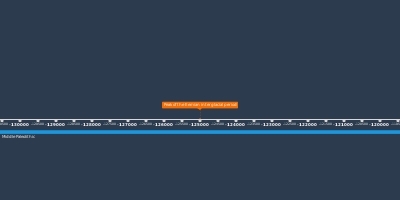1h 1min, jan 1, 125000 y BC - Peak of the Eemian interglacial period
Description:
The Eemian (also called the last interglacial,[1] Sangamonian, Ipswichian, Mikulin, Kaydaky, penultimate[2], Valdivia or Riss-Würm) was the interglacial period which began about 130,000 years ago at the end of the penultimate glacial period and ended about 115,000 years ago at the beginning of the last glacial period.[3] It corresponds to Marine Isotope Stage 5e.[4] Although sometimes referred to as the "last interglacial" (in the "most recent previous" sense of "last"), it was the second-to-latest interglacial period of the current Ice Age, the most recent being the Holocene which extends to the present day (having followed the last glacial period). The prevailing Eemian climate was, on average, around 1 to 2 degrees Celsius (1.8 to 3.6 Fahrenheit) warmer than that of the Holocene. However, due to global warming, the past few July global temperatures likely surpassed the (long-term average) July temperatures of the Eemian period. During the Eemian, the proportion of CO2 in the atmosphere was about 280 parts per million.[5]The Eemian is known as the Ipswichian in the UK, the Mikulin interglacial in Russia, the Valdivia interglacial in Chile and the Riss-Würm interglacial in the Alps. Depending on how a specific publication defines the Sangamonian Stage of North America, the Eemian is equivalent to either all or part of it.
Added to timeline:
Date:
1h 1min, jan 1, 125000 y BC
Now
~ 127110 years ago
